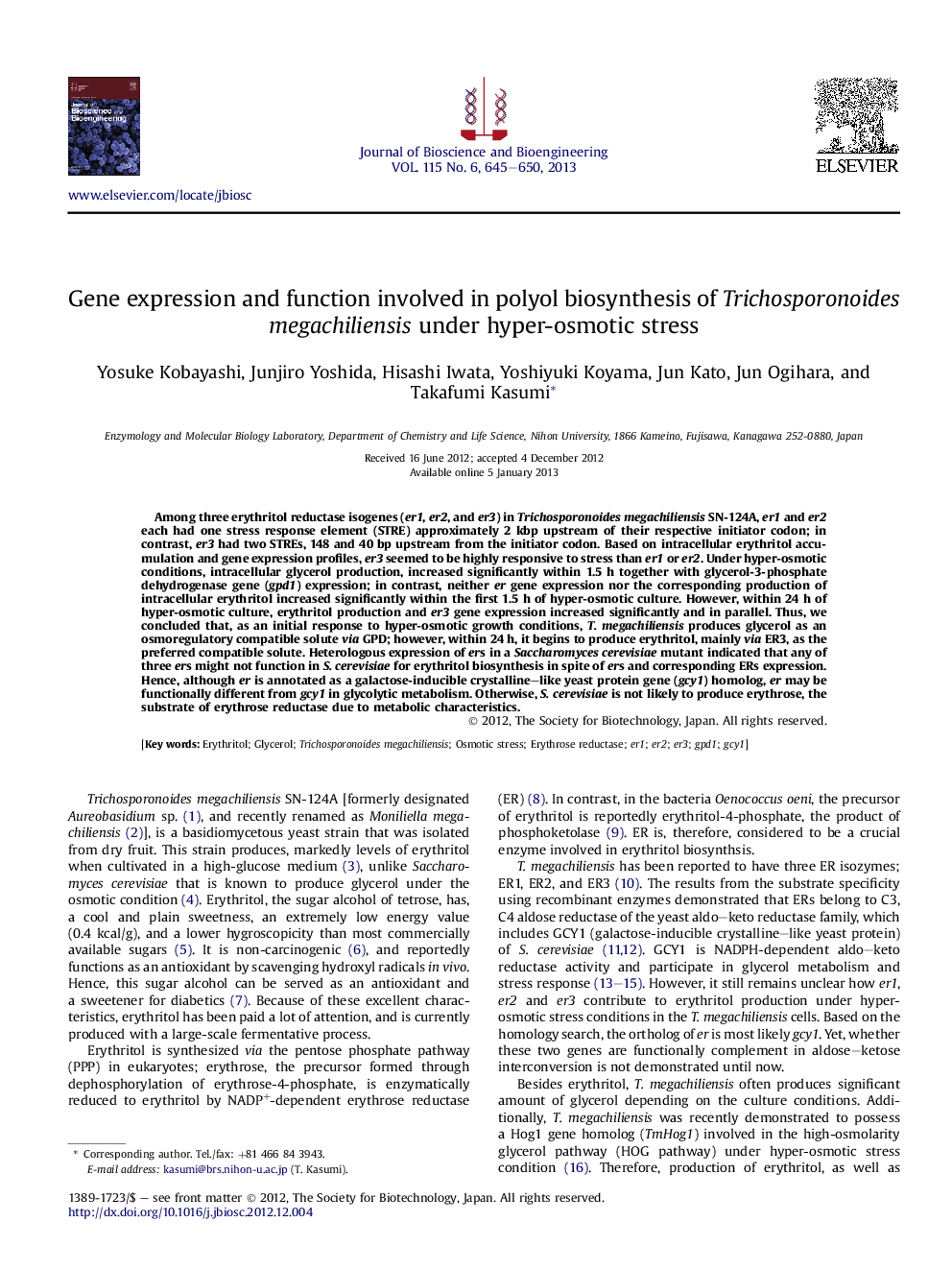| کد مقاله | کد نشریه | سال انتشار | مقاله انگلیسی | نسخه تمام متن |
|---|---|---|---|---|
| 20725 | 43188 | 2013 | 6 صفحه PDF | دانلود رایگان |

Among three erythritol reductase isogenes (er1, er2, and er3) in Trichosporonoides megachiliensis SN-124A, er1 and er2 each had one stress response element (STRE) approximately 2 kbp upstream of their respective initiator codon; in contrast, er3 had two STREs, 148 and 40 bp upstream from the initiator codon. Based on intracellular erythritol accumulation and gene expression profiles, er3 seemed to be highly responsive to stress than er1 or er2. Under hyper-osmotic conditions, intracellular glycerol production, increased significantly within 1.5 h together with glycerol-3-phosphate dehydrogenase gene (gpd1) expression; in contrast, neither er gene expression nor the corresponding production of intracellular erythritol increased significantly within the first 1.5 h of hyper-osmotic culture. However, within 24 h of hyper-osmotic culture, erythritol production and er3 gene expression increased significantly and in parallel. Thus, we concluded that, as an initial response to hyper-osmotic growth conditions, T. megachiliensis produces glycerol as an osmoregulatory compatible solute via GPD; however, within 24 h, it begins to produce erythritol, mainly via ER3, as the preferred compatible solute. Heterologous expression of ers in a Saccharomyces cerevisiae mutant indicated that any of three ers might not function in S. cerevisiae for erythritol biosynthesis in spite of ers and corresponding ERs expression. Hence, although er is annotated as a galactose-inducible crystalline–like yeast protein gene (gcy1) homolog, er may be functionally different from gcy1 in glycolytic metabolism. Otherwise, S. cerevisiae is not likely to produce erythrose, the substrate of erythrose reductase due to metabolic characteristics.
Journal: Journal of Bioscience and Bioengineering - Volume 115, Issue 6, June 2013, Pages 645–650